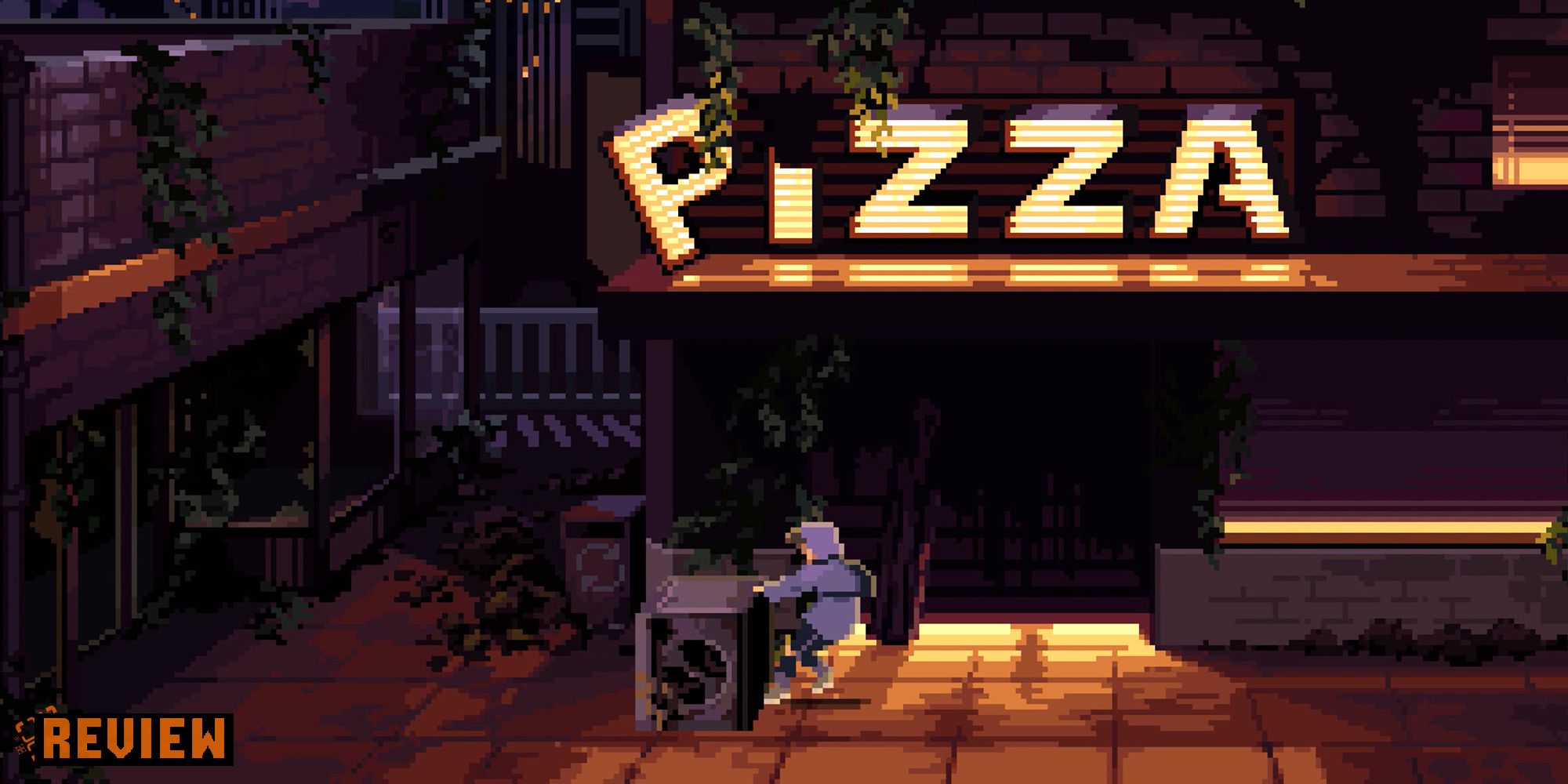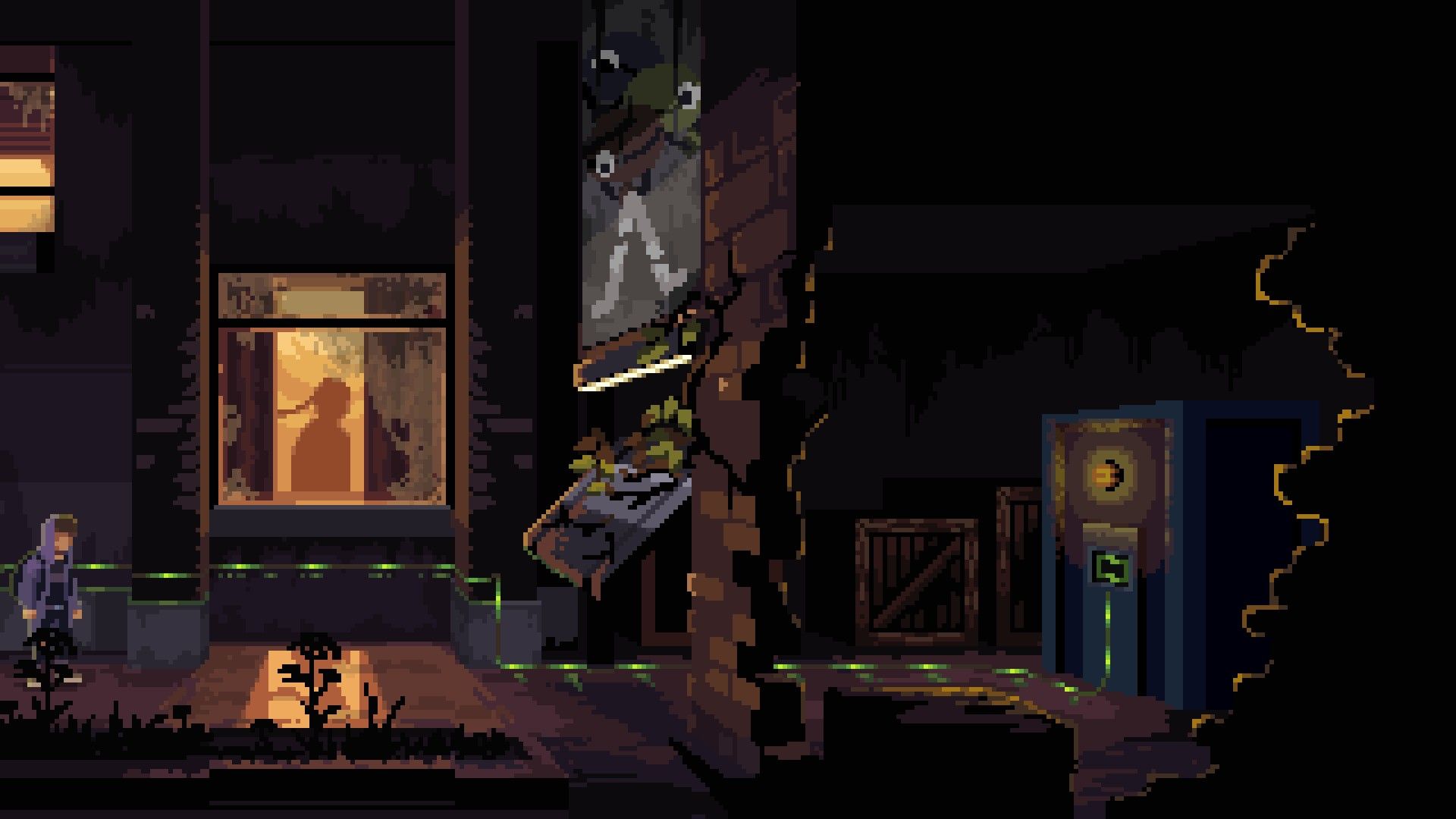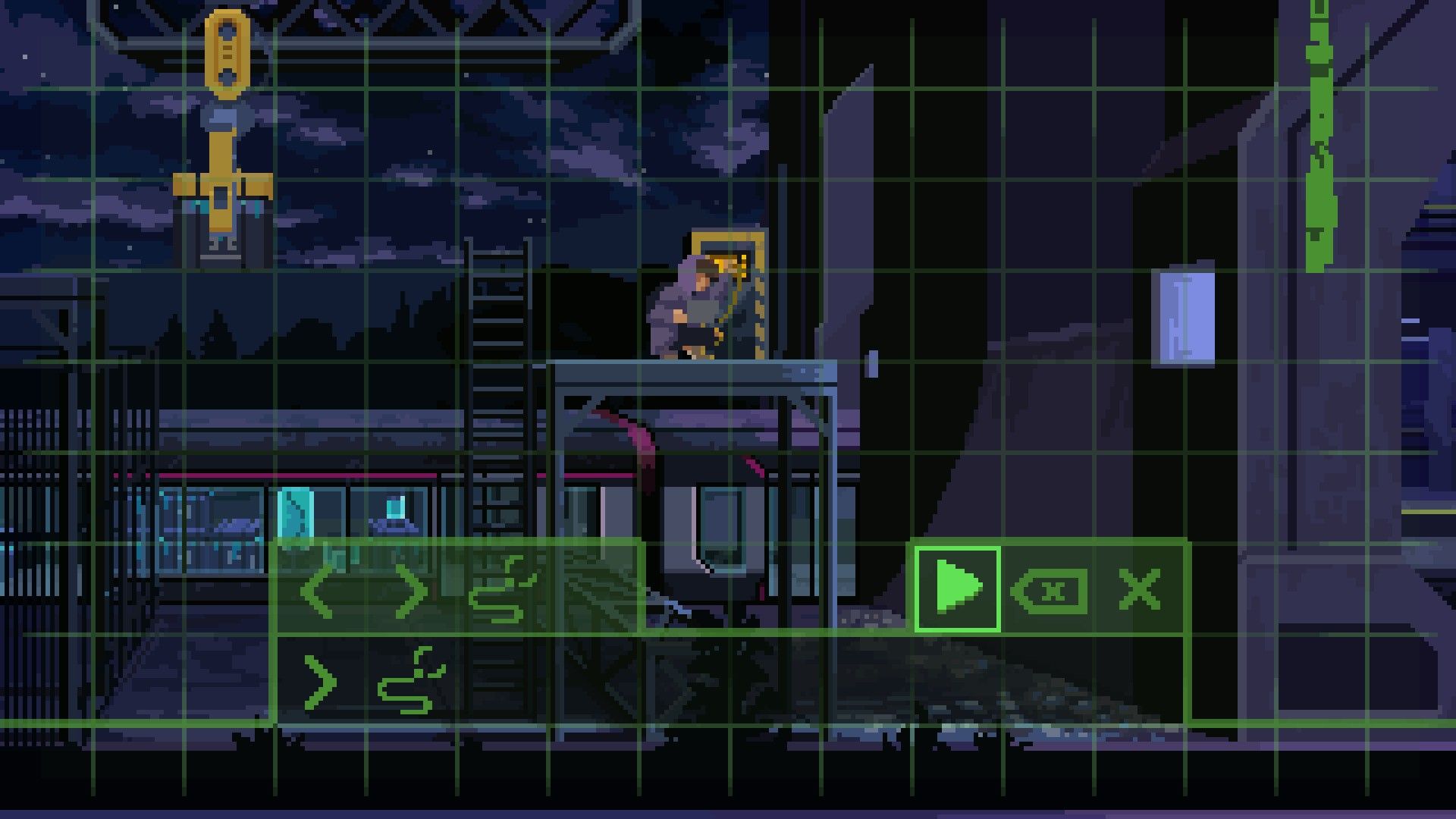It was only a matter of time until games started to play on our experiences during the first months of the Coronavirus pandemic. Global lockdowns and a total shift in how we approach life, health, and public safety is a big pill to swallow as a society, and seeing that change reflected in the art we create and consume is to be expected. Full Void is one such example with its haunting dystopia ruled by a rogue AI.
Every aspect of Full Void seems fine-tuned to make you feel isolated and small. You’re a nameless protagonist in a world with no dialogue, no text, and not even a tutorial to guide you through it. The only sound you hear, apart from horror-style musical stings when you encounter death, is entirely diegetic, highlighting how empty the outside world is. While there is a clear narrative at work here, you’re forced to fill in the gaps yourself, creating a wonderful sense of immersion. If you don’t fully dive into this world and analyse the environments and small clues that the game provides. It’s through this attitude that Full Void shines as a narrative adventure, although it isn’t without its shortcomings.
This pervading sense of loneliness is entrenched throughout much of the game. The only other humans you see are in the background, inside buildings, and hooked up to tubes. Sometimes they are merely set dressing, but an early puzzle has you avoiding the gaze of a faceless adult peering through a window. Outside, you’ll only encounter antagonistic robots who will chase you down at the mere sight. Get caught, and the game is over. This establishes early on that you, as a young teenager, cannot rely on the grownups, and you’re all alone trying to survive in this dystopian world.
As you proceed through the ruined streets and abandoned labs, you’ll come across infrequent visions of the past interwoven eloquently with the present. The significant and stark contrast between the brightly-lit, joyful past and the gloomy present further underlines the sudden shift in tone the world has undertaken thanks to the tyrannical AI that now oversees it. After all, you play a young teenager whose memories are of a far different world - things must have changed incredibly quickly. A cute pizza restaurant that you and your young sibling hang out near fades to the present day, showing a dilapidated sign and fall to ruin. The labs, once buzzing with scientists and feeling like a safe place, are now haunted by mechanical beasts and broken glass.
This is where the core message about lockdown and self-isolation comes into play. Full Void is ostensibly a metaphorical take on the unique difficulties that children suffered during the worst months of COVID-19. The adults in their lives became so ‘plugged-in’ to the news cycle and all the new rules that children don’t quite understand, making them more akin to fearful robots than watchful guardians. This only made lockdowns feel all the more isolating - and this all happened in what felt like the blink of an eye.
I initially scoffed at the heavy-handed metaphors that Full Void employs, but the more I let it stew, the more I felt the game did a great job at empathizing with the generation that lost an entire two years of their childhoods to the pandemic. Its metaphors are still heavy-handed, to be sure, and sometimes they need to be, but the positioning of lockdown as an outright evil and the cause of untold suffering doesn’t sit right with me. It saved countless lives, regardless of the trauma it forcibly inflicted on millions.
Full Void is on the simpler side in regards to gameplay. You’ll encounter platforming challenges, logic puzzles, and chase sequences, but it never feels especially challenging. At first, platforming feels very clunky, especially if you’re used to platformers where you must rely on precise movement and timing. Full Void, however, uses a tile-based movement system where the protagonist moves square by square with no half-measures. Until you realise this, likely only when you come across your first puzzle that blatantly just shows you the grid at play, movement feels unintuitive and frustrating. Once you do get to grips with the grid, everything feels better.
Full Void is split into individual screens, not scrolling environments. This means you have no idea what to expect on the next screen until you arrive, leading to leaps (or sometimes drops) of faith. While this is an effective means of teaching the player to be cautious and steady with high platforms and creating genuine tension during chase sequences, there are times where you feel goaded into avoidable deaths simply by holding down the right button for a second too long. Death is a slap on the wrist and checkpoints are plentiful, but it still feels frustrating.
While the platforming is clunky before it’s good, Full Void is remarkably consistent regarding its puzzles, which I’d consider the game’s highlight. Early on, you’ll acquire a spherical robot friend that sticks around, and is used to complete puzzles that require you to work in tandem with another body. This creates a dynamic not unlike the companion cube from Portal, and the sphere’s cutesy look doesn’t harm its appeal. In a world so devoid of life or companionship, the sphere is a welcome friend. The puzzles you’re forced to complete are also satisfying, often consisting of discrete planning and execution phases.
Full Void is on the short side, but that’s no bad thing. There’s only so much you can do to keep someone invested in a dystopian narrative that does little to explain the world it resides in, and this adventure thankfully provides mystery, suspense, and climax in quick succession. I clocked in at just under two hours and came away satisfied. While the metaphors at work err on the self-indulgent side and the gameplay is relatively shallow, Full Void delivers a memorable experience about how it feels to have your childhood ripped away by forces you can’t control.
A review code was provided by the publisher.





